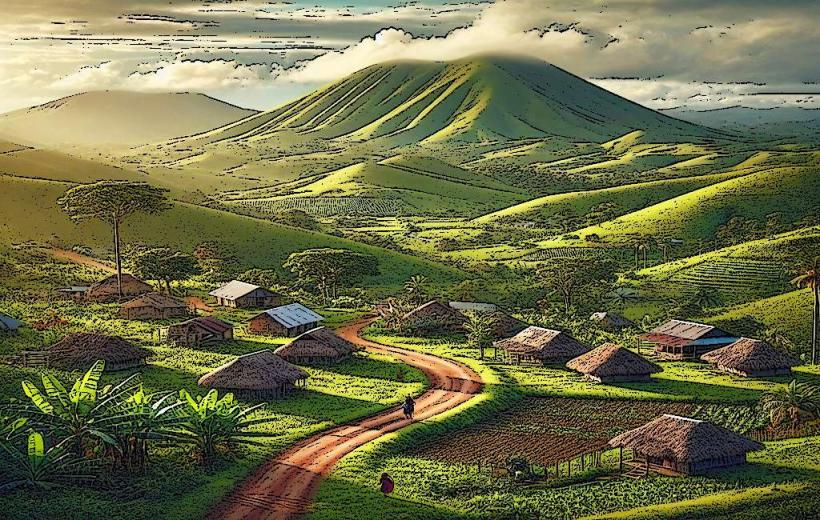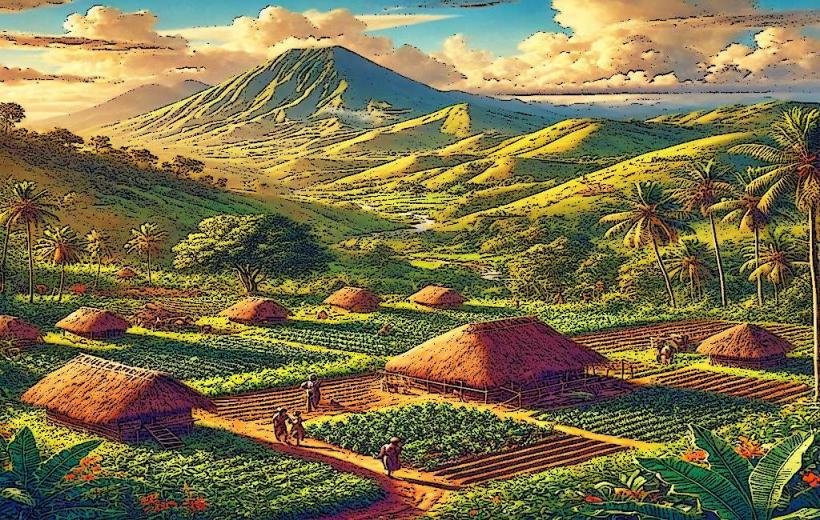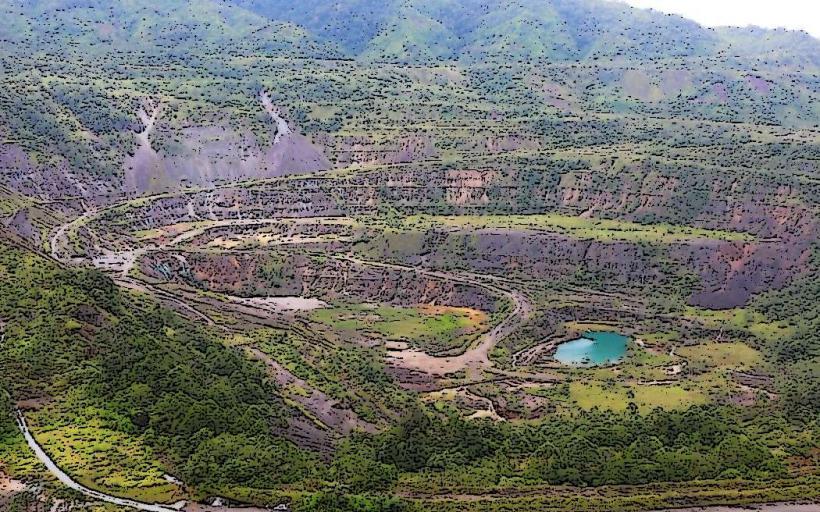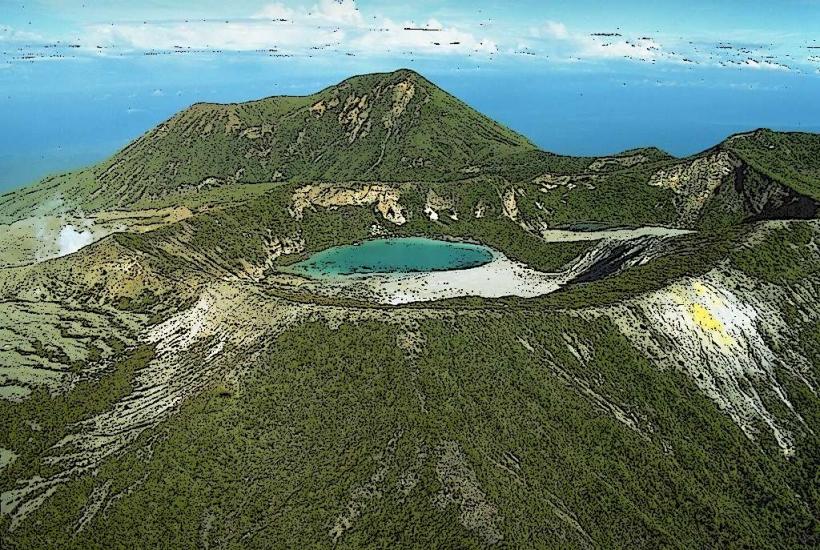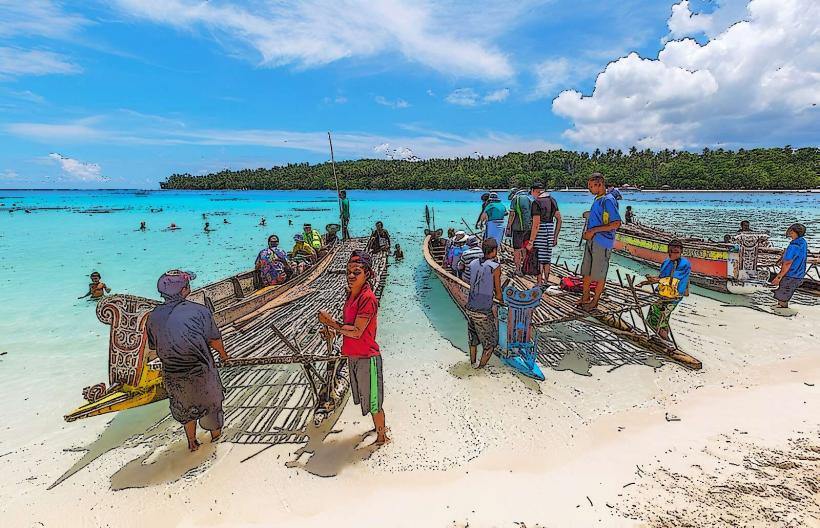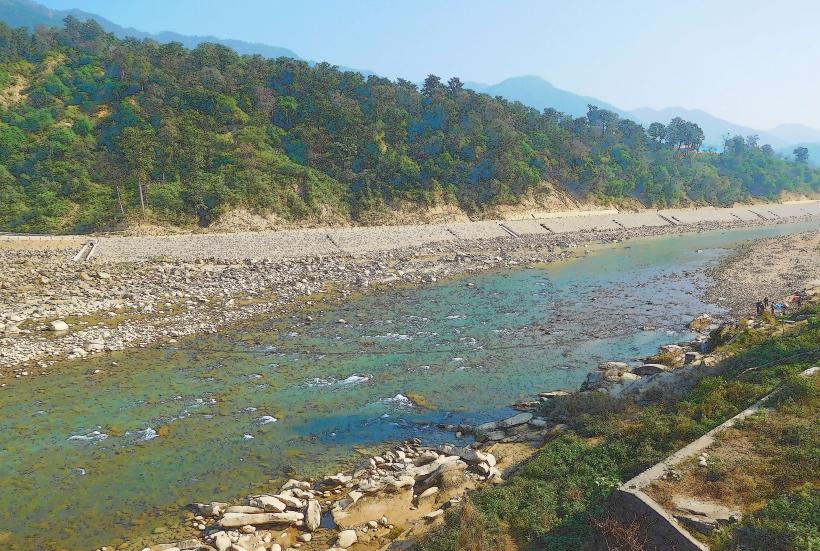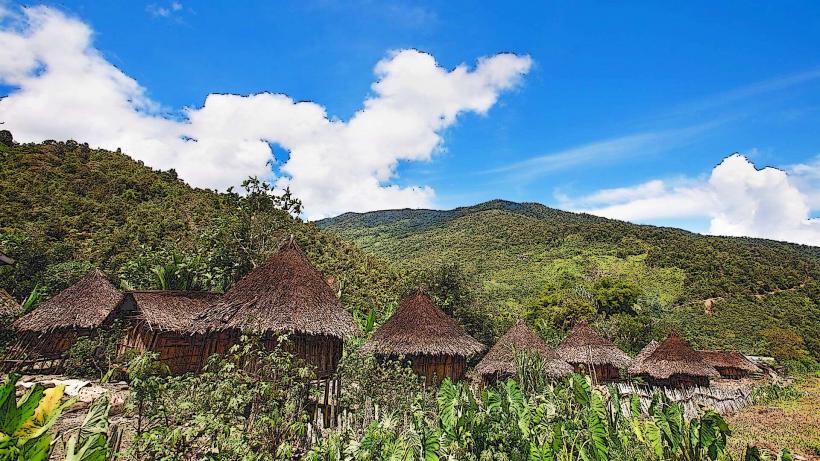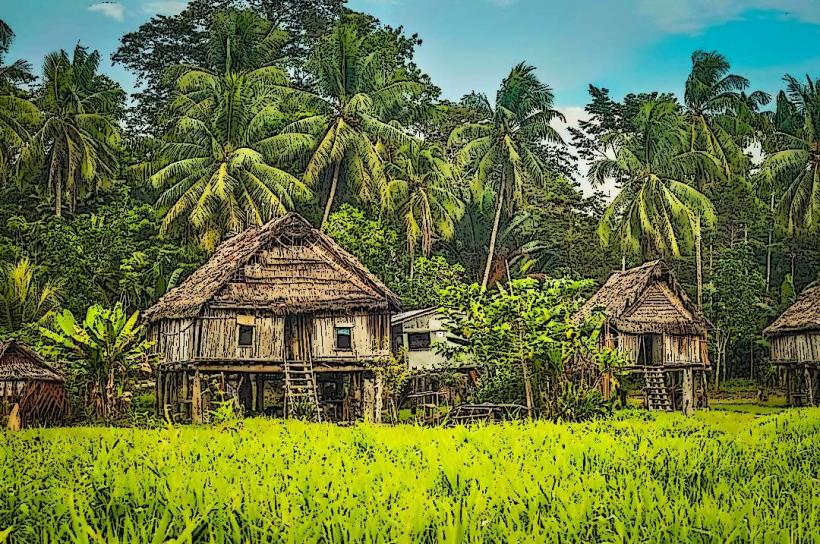Information
Landmark: Baining MountainsCity: East New Britain
Country: Papua New Guinea
Continent: Australia
The Baining Mountains are a mountain range located in the southeastern part of Papua New Guinea (PNG). They are part of the larger Central Cordillera, a series of mountain chains that stretch across the island of New Guinea. The Baining Mountains are particularly notable for their unique culture, wildlife, and their relatively remote, rugged terrain.
1. Geography and Location
The Baining Mountains are situated in the Eastern Highlands Province of Papua New Guinea, to the northeast of the larger mountain range that includes the Owen Stanley Range. The mountains are located near the coast of the island, close to the town of Rabaul, which is on the northeastern tip of New Britain Island. This positioning places them between the Bismarck Sea to the north and the Solomon Sea to the south.
Elevation: The Baining Mountains are characterized by steep slopes and high peaks, with elevations ranging up to approximately 2,100 meters (6,890 feet) above sea level in some areas. The highest peak in the range is Mount Baining.
Terrain: The mountains are heavily forested, with dense rainforests covering much of the area. The steep terrain and difficult access have kept large parts of the Baining Mountains relatively unexplored and uncharted. Rivers and streams originating from these mountains flow down to the coastal plains, often creating deep valleys and gorges.
2. Climate and Environment
The climate of the Baining Mountains is tropical and humid, with rainfall occurring year-round. The area experiences significant rainfall due to the monsoonal winds, which contribute to the dense vegetation and rainforest ecosystems. Temperatures are relatively stable throughout the year, with average highs ranging from 25 to 30°C (77 to 86°F).
Flora: The region’s rainforests are rich in biodiversity, with a variety of plant species including tropical hardwood trees, ferns, and other rainforest plants. These forests are an important part of the local ecosystem, providing habitat for numerous animal species.
Fauna: The Baining Mountains are home to many endemic species of both plants and animals. While specific species are not always well-documented due to the remote nature of the region, it is known that the area hosts a variety of wildlife, including marsupials like tree kangaroos, as well as a range of bird species, reptiles, and insects. The rich biodiversity is typical of New Guinea's forests.
3. Cultural Significance
The Baining Mountains are home to the Baining people, an indigenous group known for their rich cultural traditions, particularly their distinctive rituals and practices.
Baining People: The Baining people live in small, scattered villages in the mountain foothills. They are traditionally horticulturalists, growing crops such as sweet potatoes, yams, and taro, as well as raising livestock such as pigs. Their society is organized into clans, with strong emphasis on community and kinship ties.
Traditional Practices: One of the most well-known cultural aspects of the Baining people is their fire dance rituals. These elaborate performances involve men wearing elaborate masks and costumes, and they are often held during important cultural ceremonies. The Baining fire dance is performed around large bonfires, and dancers leap through flames as part of the ritual, symbolizing spiritual cleansing and the forging of connections with ancestral spirits.
Art and Craft: The Baining people are skilled in creating intricate wood carvings, masks, and other ceremonial items, many of which are used in their rituals. These carvings and artworks often depict spirits, animals, and mythological figures that are central to their beliefs.
4. History and Exploration
The Baining Mountains were historically isolated due to their rugged terrain and the dense rainforests that make access difficult. As a result, they remained relatively unknown to the outside world for a long period of time. Western exploration of the region began in the early 20th century, but due to the inaccessibility of the mountains, it was not until later that comprehensive studies and expeditions were conducted in the area.
In the 1930s and 1940s, explorers and anthropologists began documenting the Baining people and their cultural practices, including the famous fire dances. However, the region still retains a level of isolation, and many aspects of Baining life and culture remain local and distinct from broader Papua New Guinean society.
5. Challenges
The Baining Mountains face several challenges in the modern era, particularly related to environmental conservation and cultural preservation.
Deforestation: Logging and agricultural expansion threaten the delicate ecosystems of the Baining Mountains. Deforestation due to logging for timber and the conversion of land to agriculture, particularly palm oil plantations, is a growing concern. This has led to habitat loss for wildlife and changes in the water systems that feed into the rivers of the region.
Cultural Erosion: As with many indigenous groups around the world, the Baining people face challenges in preserving their cultural traditions in the face of modern influences. While some aspects of their culture, such as the fire dance, are still practiced, younger generations may increasingly migrate to urban areas for work and education, leading to shifts in their traditional lifestyles.
6. Tourism Potential
While the Baining Mountains are remote, the region has significant potential for eco-tourism and cultural tourism. The natural beauty of the mountains, along with the unique cultural practices of the Baining people, could attract visitors interested in both adventure travel and learning about indigenous traditions.
Fire Dances: The Baining fire dance is a major draw for tourists, with some visitors traveling to the region specifically to witness these incredible ceremonies. However, this practice is deeply tied to the cultural and spiritual life of the Baining people, and any tourism development in the region must be done with sensitivity to local traditions.
Ecotourism: The lush forests, diverse wildlife, and stunning landscapes of the Baining Mountains also offer opportunities for ecotourism. However, any tourism development would need to balance the environmental concerns of the area with the needs of the local communities.
Conclusion
The Baining Mountains are a region of significant natural beauty, cultural richness, and biodiversity. Though remote and relatively inaccessible, the mountains offer a glimpse into the traditional lives of the Baining people and the pristine ecosystems of Papua New Guinea. However, the region faces environmental and cultural challenges that threaten its unique heritage, and careful management will be required to preserve both the natural environment and the cultural traditions of the Baining people.

